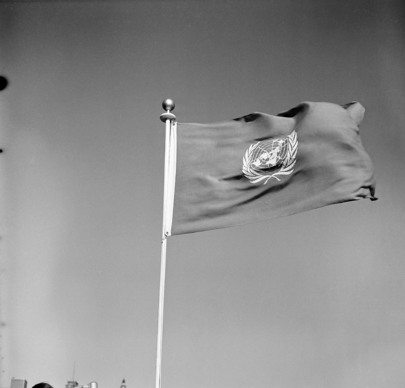“Data is central to humanitarian action,” OCHA said, as aid organizations look to “focus their response to reach the communities with the most severe needs.”
In its latest report on the State of Open Humanitarian Data OCHA said that “as the humanitarian system severely contracts due to unprecedented funding cuts and threats to principled humanitarian action, the data ecosystem that supports it will experience the same pressure.”
Budget cuts threatening aid as a whole have had a devastating impact on data gathering, impeding an effective humanitarian response.
The data gathered by the United Nations and its partners covers a broad range of issues including, for example, climate hazards such as droughts, floods and storms.
Information on rainfall, temperatures, the extent of floods and the impact on agriculture during those extreme weather events can provide important indicators including the number of people expected to be affected or displaced and ultimately help to save lives.
Cameroon floods
In 2024, ahead of the rainy season in Cameroon, the UN Central Emergency Response Fund (CERF) partnered with the OCHA Cameroon Office to estimate flood exposure and track it in near-real time.
The Centre predicted that about 350,000 people would be exposed to the flooding, as the season progressed, over 356,000 people were affected.
The analysis supported a timely allocation of $4 million from CERF which provided help to 176,500 affected people in the most vulnerable areas.
Humanitarian Data Exchange
In 2024, some 216 organizations shared around 2,500 data sets covering crises ranging from Afghanistan to Gaza and Sudan, information which is collected in the Humanitarian Data Exchange or HDX.
Over the last year, the HDX was consulted more than 1.4 million times by researchers in over 200 countries in territories.
Its almost 20,000 datasets were downloaded 3.5 million times – a 30 per cent increase from 2023.
The information, OCHA said, provides a “foundational set of data that is critical to understand a humanitarian context.”
Countries such as Colombia, Afghanistan and South Sudan had the highest percentage of timely data on HDX. On the other hand, Myanmar and the State of Palestine were the locations with the lowest availability level.
In light of recent aid cuts, “the year ahead promises to be challenging for data availability,” OCHA adding that it was calling on “governments and partners to continue investing in the data that underpins crisis response in what is surely a defining moment for the sector.”
Source of original article: United Nations (news.un.org). Photo credit: UN. The content of this article does not necessarily reflect the views or opinion of Global Diaspora News (www.globaldiasporanews.com).
To submit your press release: (https://www.globaldiasporanews.com/pr).
To advertise on Global Diaspora News: (www.globaldiasporanews.com/ads).
Sign up to Global Diaspora News newsletter (https://www.globaldiasporanews.com/newsletter/) to start receiving updates and opportunities directly in your email inbox for free.






























